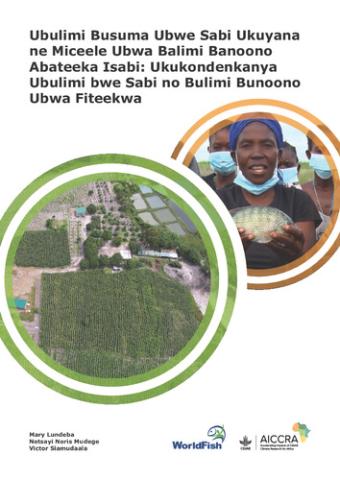Abstract
Climate change and climate shocks are putting the most vulnerable people at risk, as extreme weather events are becoming more and more intense in many regions of the world. Extreme heat, drought, floods and unpredictable farming seasons are harming farmers and their production systems, threatening their livelihoods. In marginalized and vulnerable populations, aquaculture is a key means for sustaining livelihoods because of its contribution to food security and nutrition, but many fish farmers in Zambia endure unfavorable climates for sustainable fish farming. In Zambia’s Northern and Luapula provinces, for example, aquaculture and fisheries are affected by extreme weather events, such as floods, rising temperatures and unpredictable rainfall patterns (Ministry of National Development 2017). These climatic hazards adversely impact food and water security, water quality, and people’s livelihoods, especially in rural communities that depend more on aquatic food systems. It is well known that the poorest people are vulnerable to extreme climate events, and Northern and Luapula are among the poorest provinces in Zambia, with 80.5% of people in the two provinces classified as poor and 64.5% as extremely poor as of 2010 (CSO 2010). Southern Zambia, in particular, is designated a climate hot spot. Over the past 30 years, it has experienced the lowest rainfall in the country, and it will continue to experience increased drought and flooding throughout the region, which will affect the aquaculture and the fisheries sector (Kalantary 2010). With the frequency and intensity of climate events expected to rise in the future, the negative impact on people’s livelihoods, food security, nutrition and household income generation are likely to deteriorate if no remediation interventions are proactively implemented. Therefore, it is important to collaborate with farmers to develop and disseminate relevant climate-smart adaptation and mitigation strategies. Such strategies will help farmers increase their resilience and adaptive capacity to climate variability.

